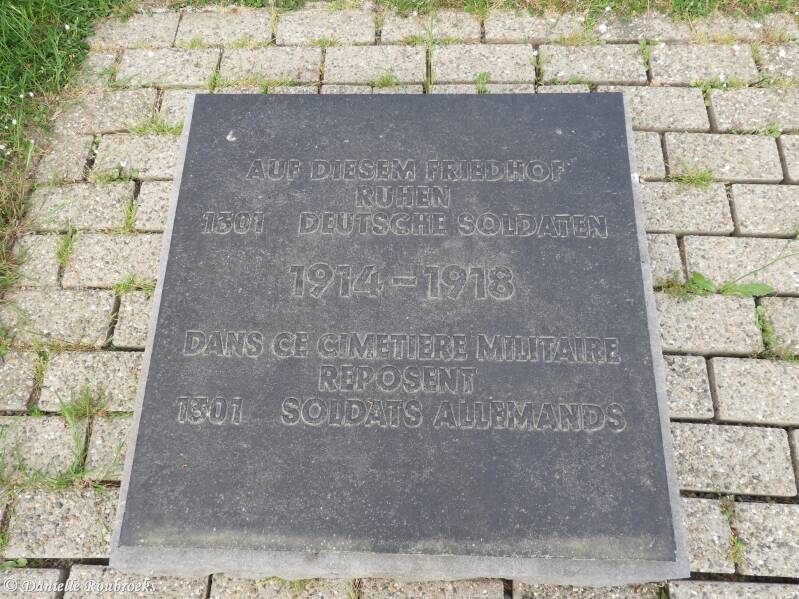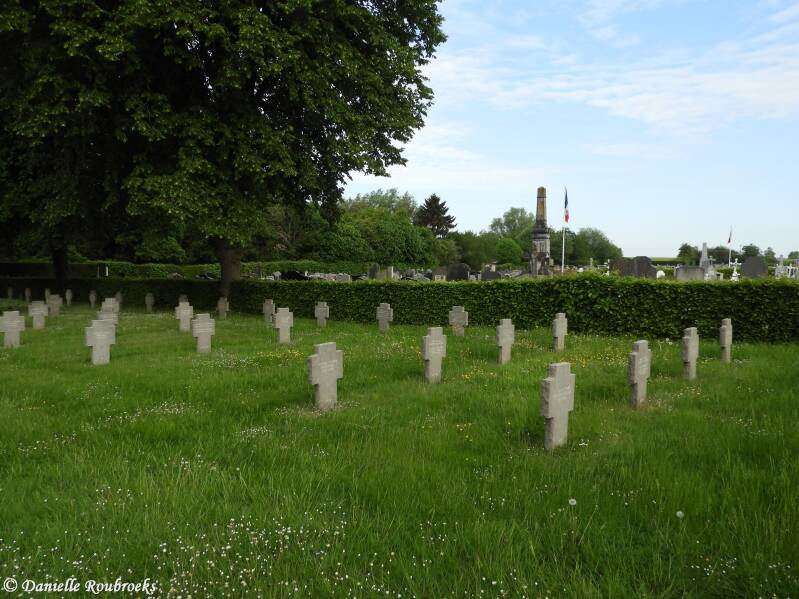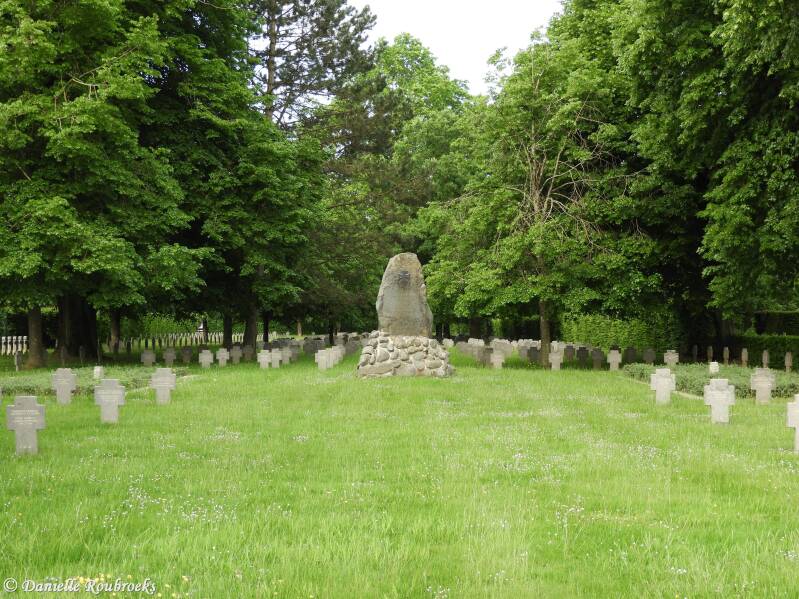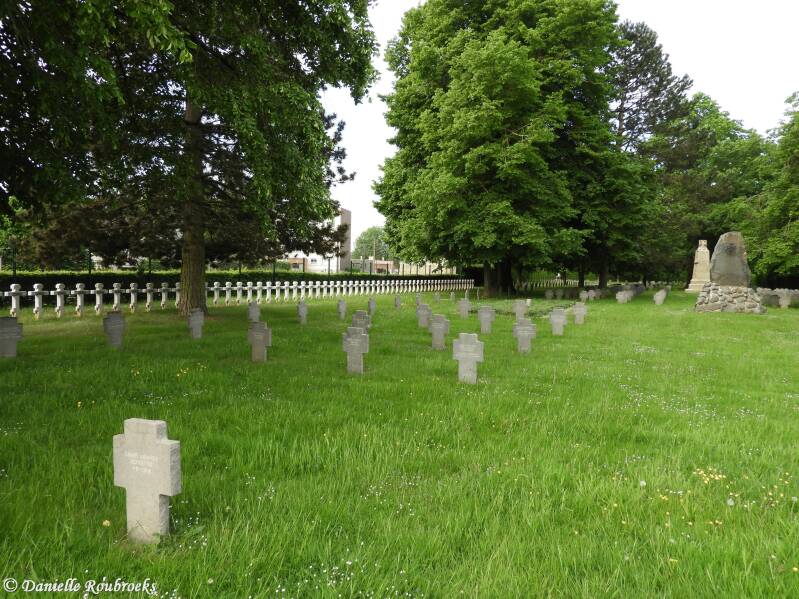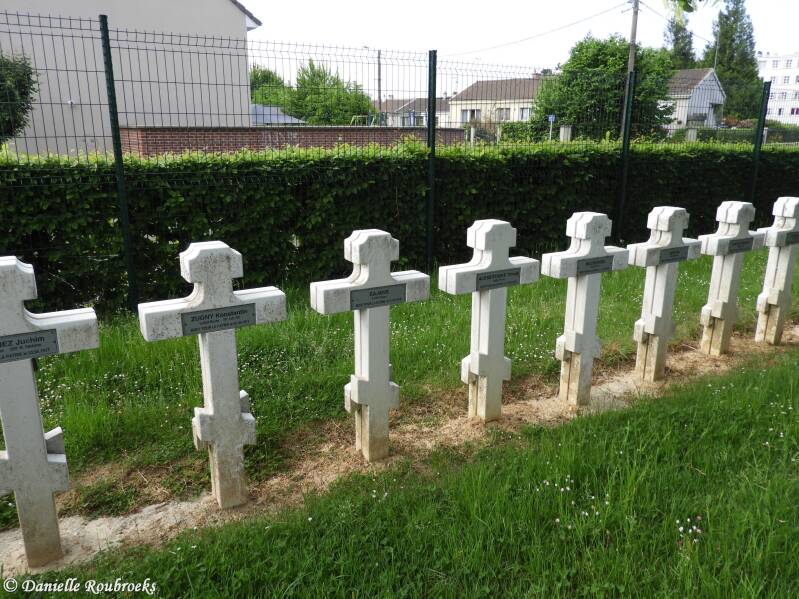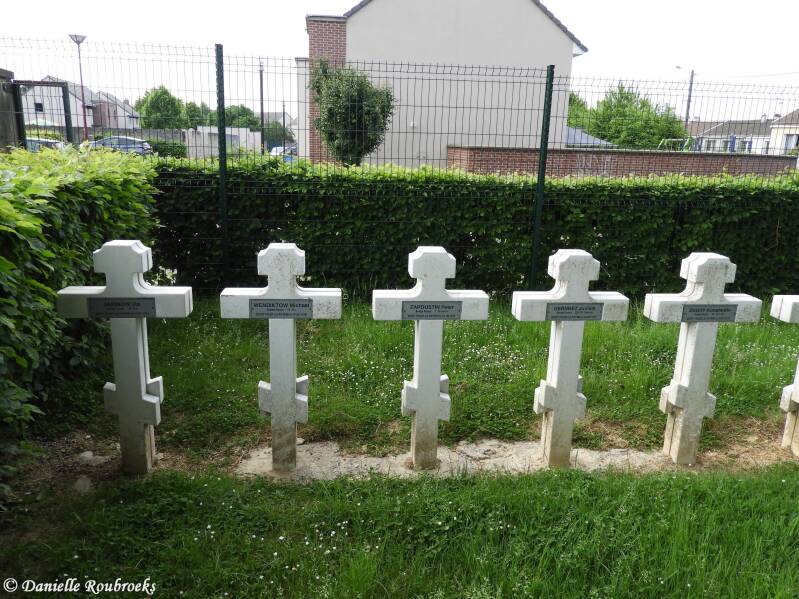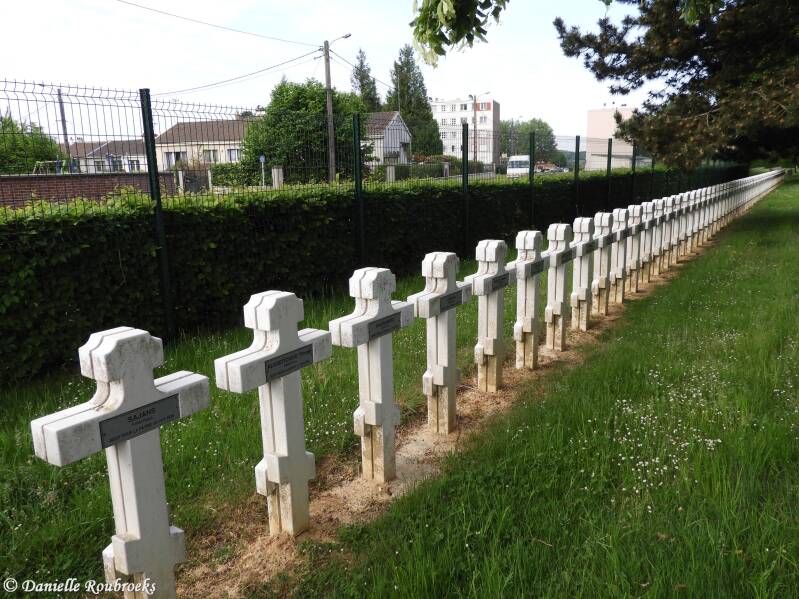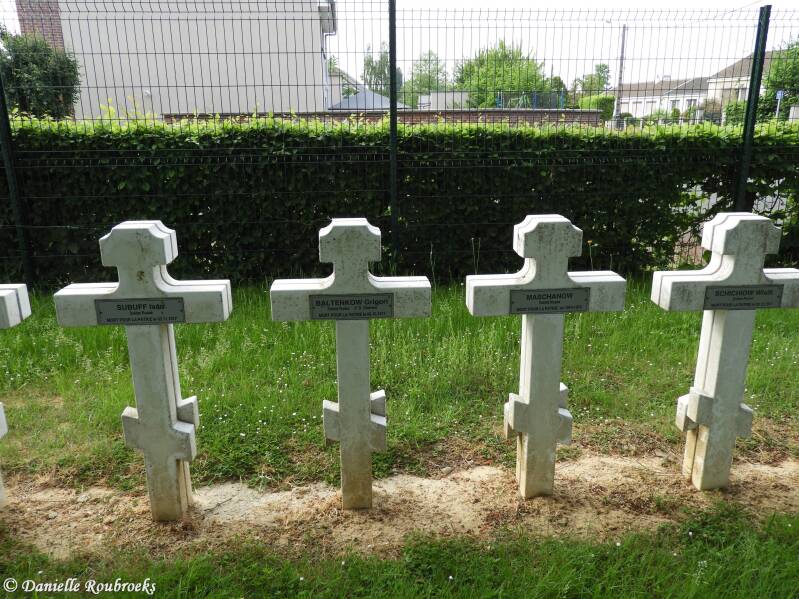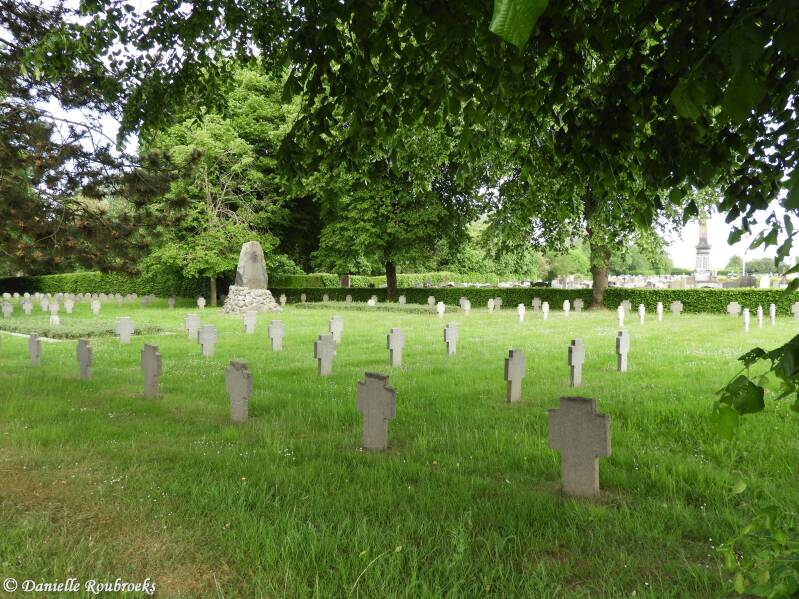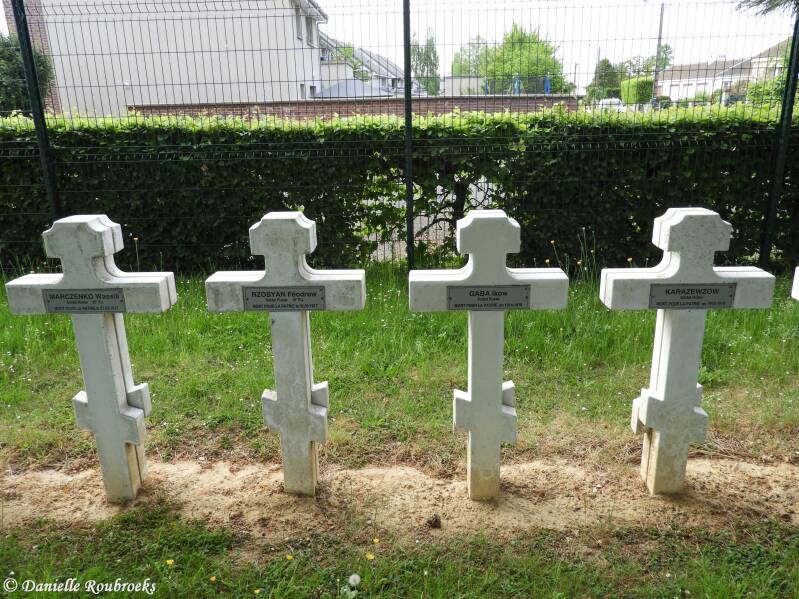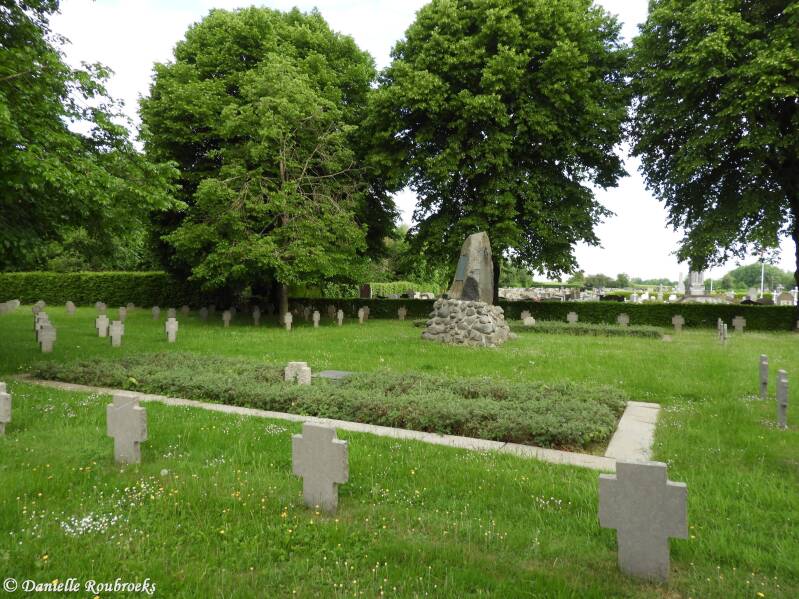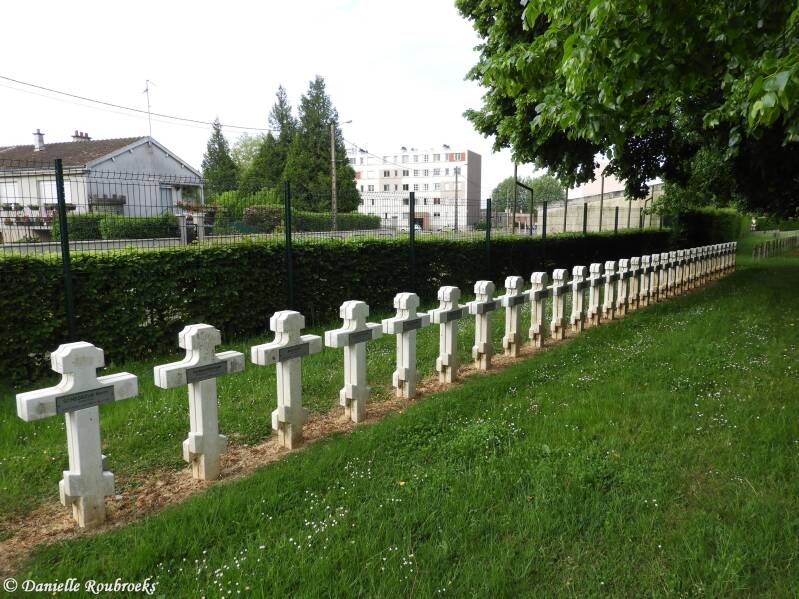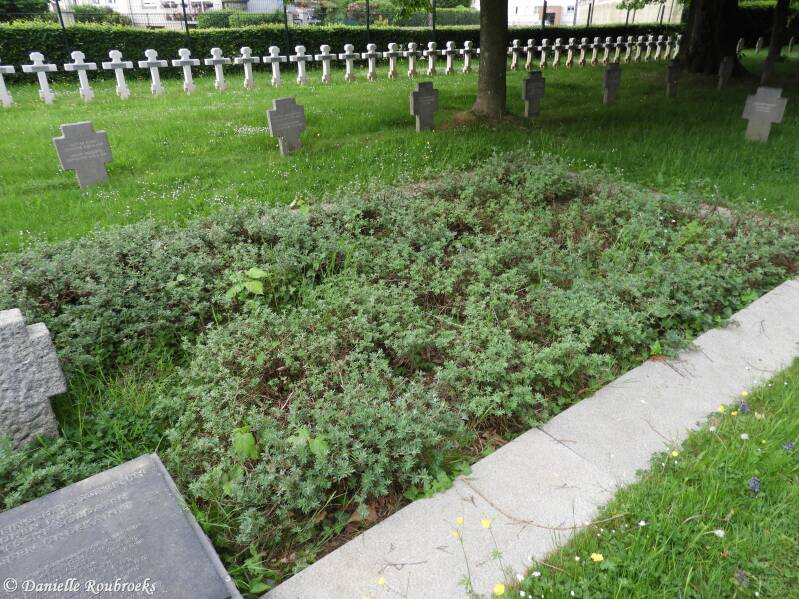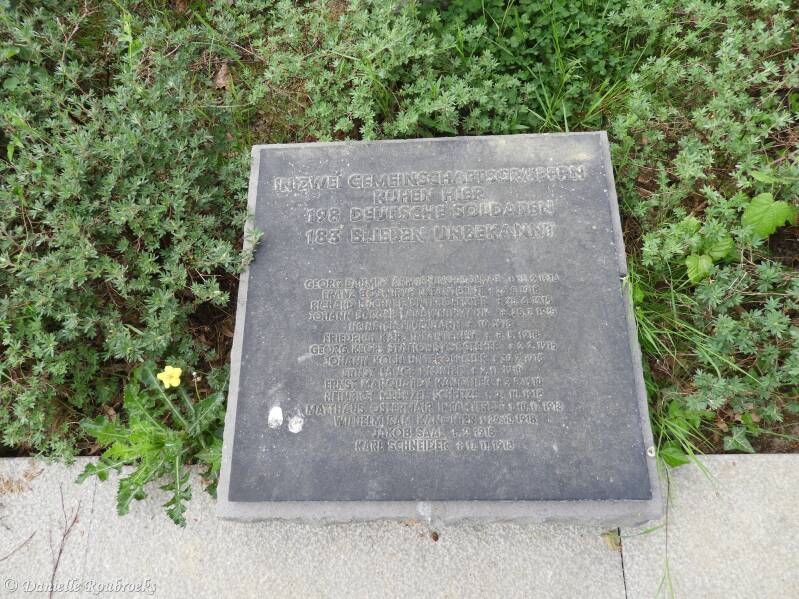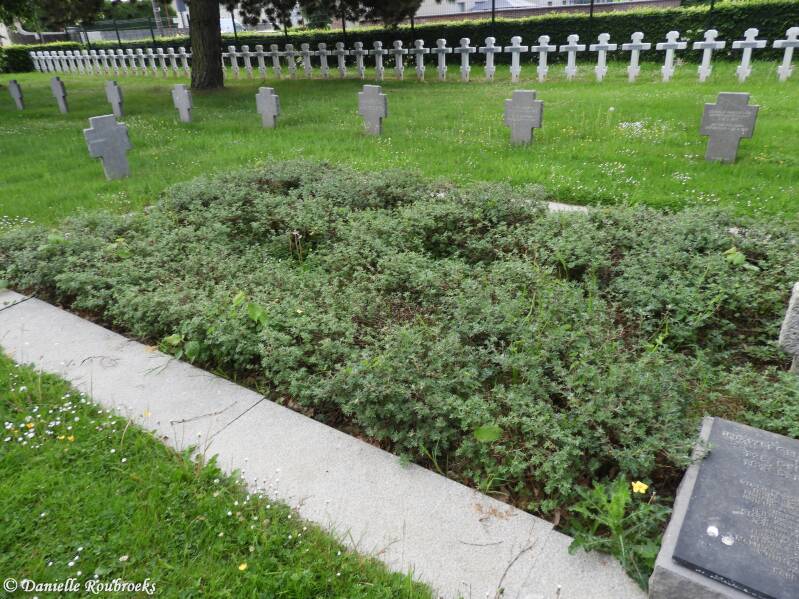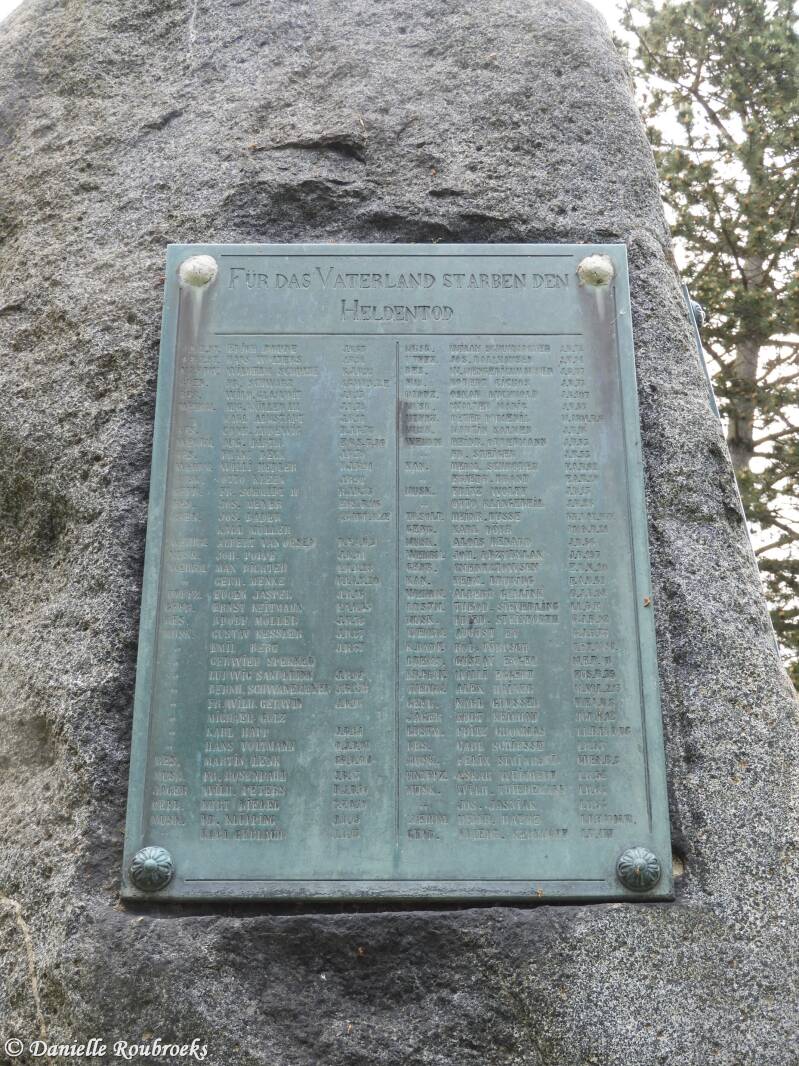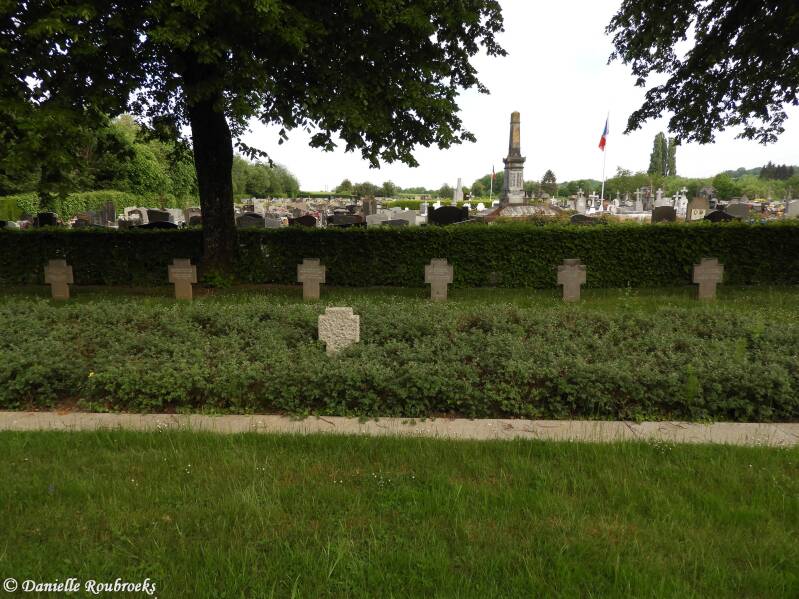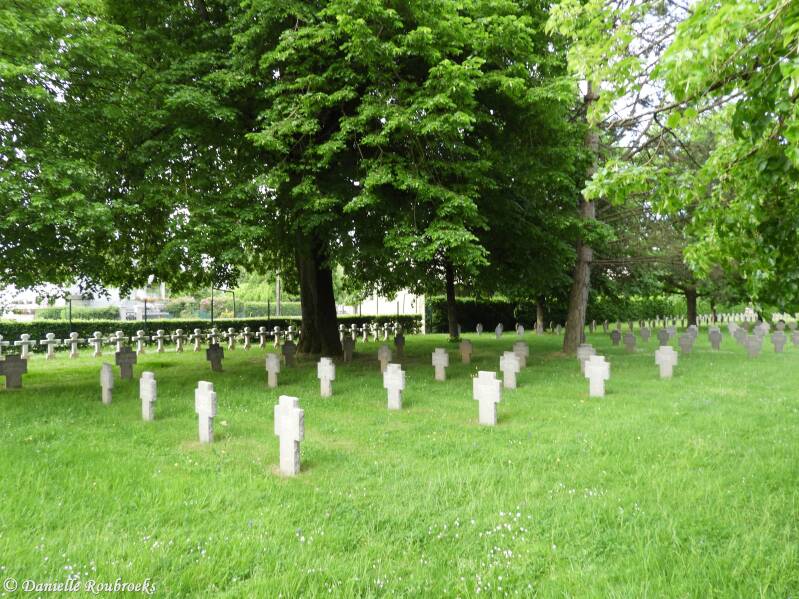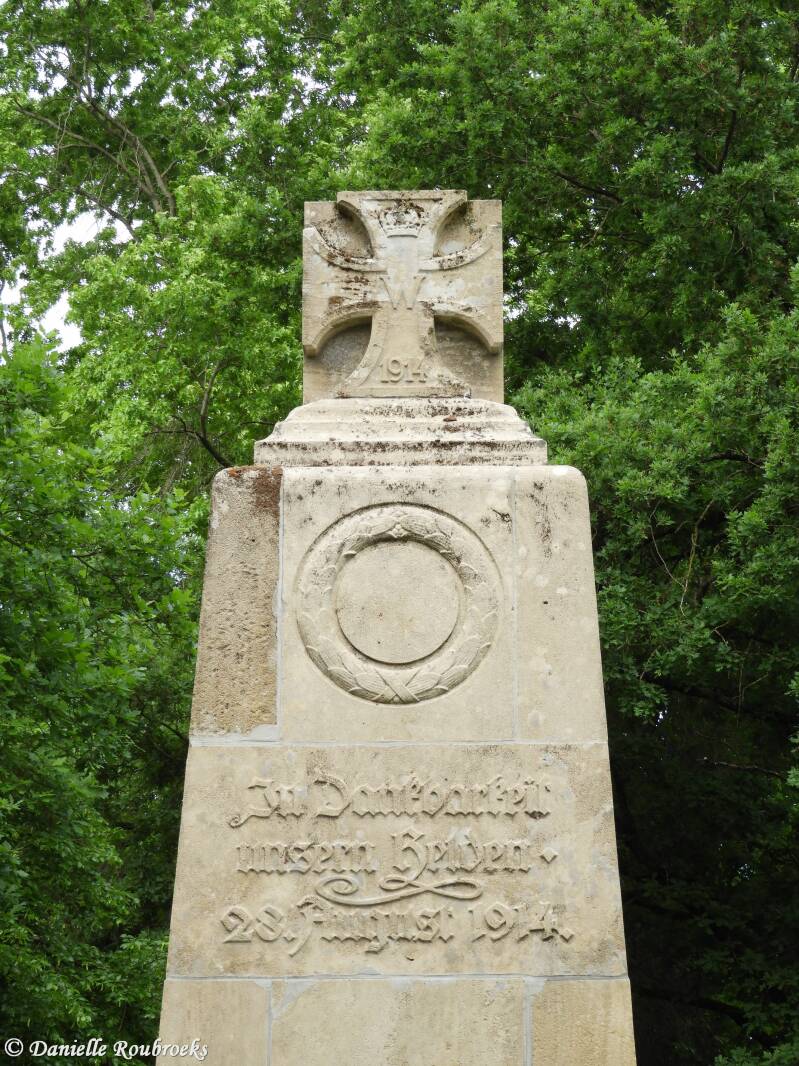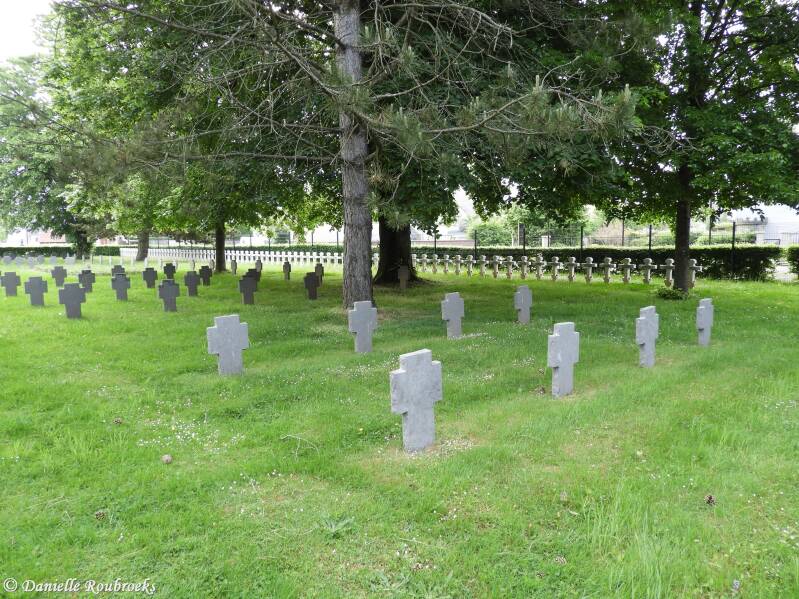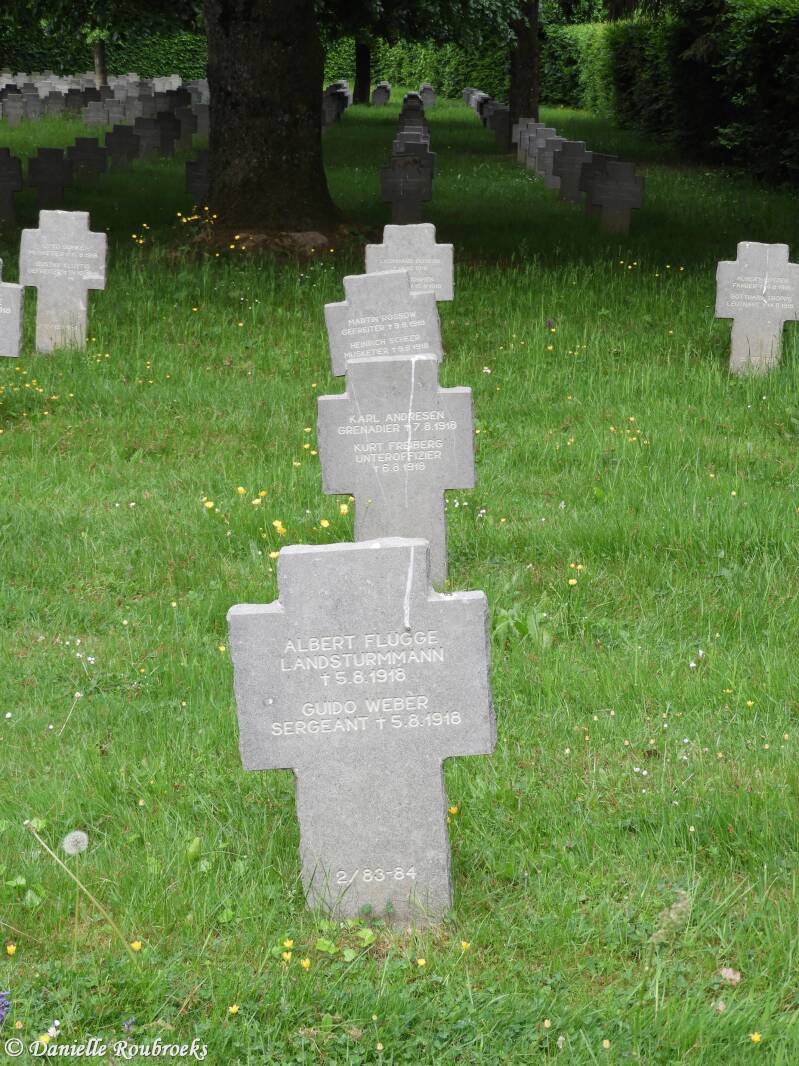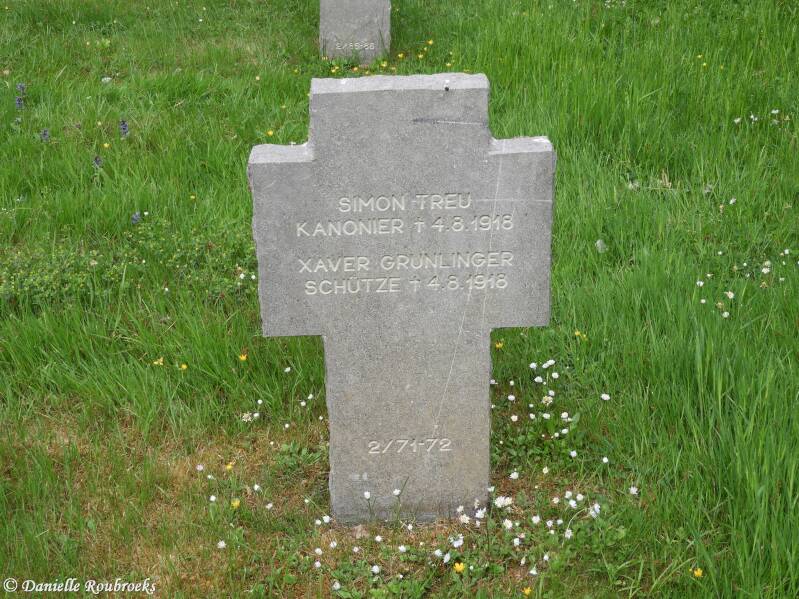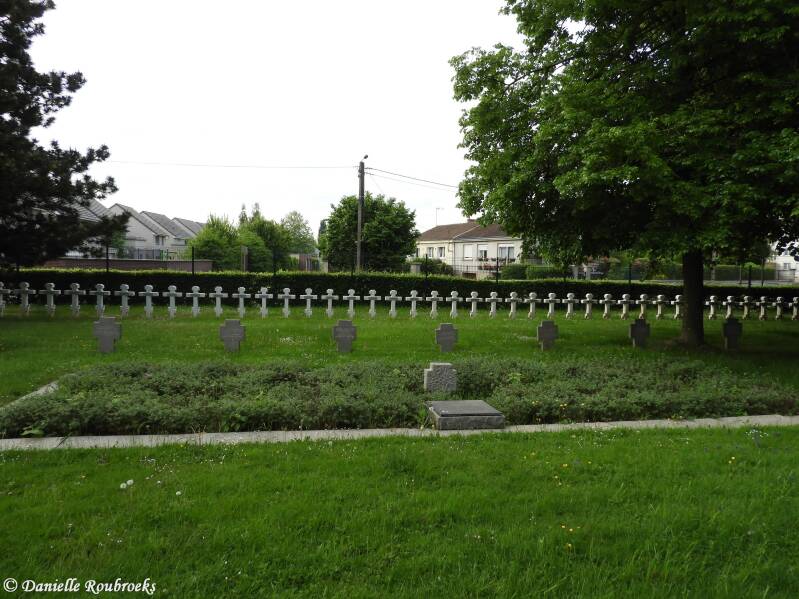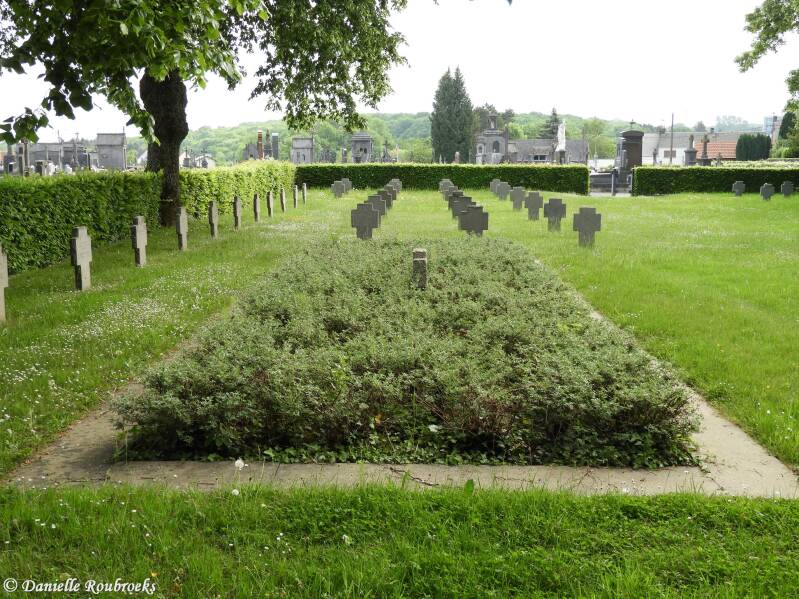Hirson Kriegsgräberstätte - German War Cemetery
Historical Information (Source: Volksbund)
1,301 German, 289 Rumanian and 159 Russian war dead of the First World War
The German military cemetery Hirson was created by the German troops in September 1914 and used as a burial place until the end of the war in 1918. After the German advance in the summer and the subsequent retreat from the Marne in September 1914, the Hirson railway junction increasingly developed into a central location for supplies in the frontline area between Reims and St. Quentin and an important hospital town. Accordingly, there are many among the dead who succumbed to their wounds here, or who worked in stage service and lost their lives through accidents or illness. Among them were railway workers, road and bridge builders, drivers, craftsmen, medical personnel and many others.
With every battle - whether in 1914 on the Aisne or 1916 on the Somme - Hirson brought again large transports of wounded. The vast majority of those buried here, however, were victims of the fighting in 1918 - beginning with the "Great Battle of France" in March / April, in May with the German attack on the "Chemin-des-Dames", which ran as far as the Marne The last burial by the German troops took place on November 7th, 1918, two days before the armistice. After the war, the French military authorities bedded further German war dead whose temporary graves were found in 18 community areas. Those resting here belonged to troops whose home garrisons were in almost all countries and Prussian provinces of the then German Empire.


